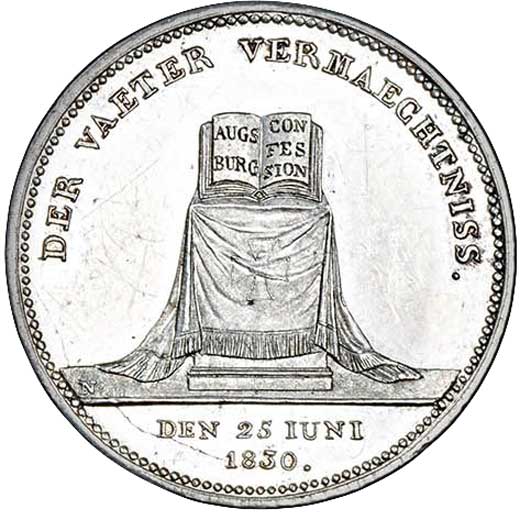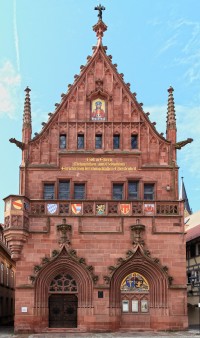Vorderseite: Auf einem mit einer Decke geschmückten Altar liegt ein geöffnetes Buch mit der Aufschrift AUGS / BURG – CON / FES / SION. Auf der Abschnittleiste links signiert N (= Neuss); im Abschnitt DEN 25 IUNI / 1830. Umschrift oben: DER VAETER VERMAECHTNISS.
Rückseite: Im Feld in neun Zeilen ZUM / ANDENKEN / DER DRITTEN / SECULARFEYER / DER ÜBERGABE / DER AUGSBURG. / CONFESSION / AM 25 IUNI / 1530.
Medailleur: Johann Jakob Neuss der Jüngere (1770–1847)
en

